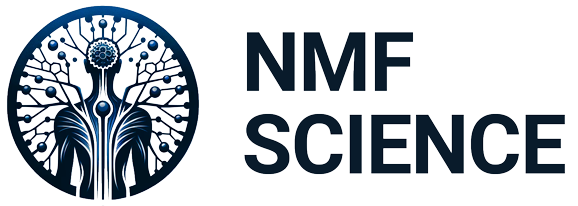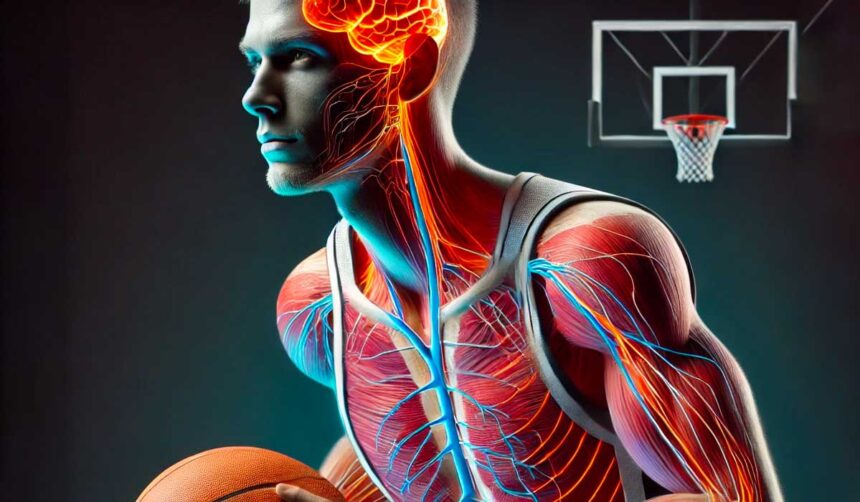As we stand at the confluence of Neuromyofascial Science and athletic performance, it becomes increasingly clear that the future of sports medicine and pain management lies beyond traditional treatment paradigms. My journey into the heart of neuromyofascial pain and its implications for athletes, particularly within the high-stakes world of NBA basketball, is driven by a dual mission: to heal and to enhance. By tracing the roots of common athletic injuries to neuromyofascial pathologies, my work not only addresses chronic pain but also opens new avenues for elevating performance. This discussion is a call to rethink how we support our athletes’ health and ambitions, advocating for a comprehensive approach that aligns neuromyofascial integrity with peak physical achievement.
The National Basketball Association (NBA) is the premier basketball league with a total of 30 teams comprised of 29 teams in the United States and one team in Canada each with a maximum roster of 15 players for a total of 450 NBA players.
The purpose of this article is to discuss how the “naturally” enhance the performance of an NBA Basketball team whereby winning the annual championship can become a reality using treatments that best address neuromyofascial pathology.
Neuromyofascial pain involves the study and treatment muscle and fascia and soft tissue that ultimately become injured and affect the spine and musculoskeletal system and its components causing most forms of chronic pain and disability.
In todays discussion, I will outline how understanding and addressing the neuromyofascial pathologies specific to professional basketball players can greatly reduce injury and enhance overall performance such that a winning team may be created by maximizing neurological power and reducing injury risk.
The Evolution of the Limb
The evolution of the limbs is a key point in understanding neuromyofascial pain and both preventing and treating its related injuries.
I have previously discussed this concept in great detail in several past auio project and written articles, so I will cut to the chase so to speak.
The origins of both the upper and lower limbs was from the emergence of developing elements from our spine.
For basic argument’s sake, the legs evolved from the lower spine area, and the arms evolved from the neck and upper back area.
This fact explains why neuropathic pain occurs, and why neuropathy and subclinical myelopathy is behind much of every form of chronic pain, joint pain, arthritis, tendonitis and greatly affects muscle power, muscle endurance, and risk of motor neuropathic dystonic changes in muscle fibres of the limbs.
Tennis elbow also known as lateral epicondylitis, is a common pain condition in sports clinics, but is also a common complaint as a chronic pain in pain clinics. The average recovery from chronic tennis elbow is about 2 years with or without treatment.
The Canadian College of Family Medicine reports in 2021, after a review of therapeutic effectiveness, that NO treatment for tennis elbow proved better than placebo.
What is being reported by the CCFP is that all of our varied treatments such as cortisone, physio, massage, platelet rich plasma, stretching of the elbow and arm have been proven little more effective than time; where you wait, and hope, it will get better.
Using neuromyofascial science technology, we now understand that the initiating cause of most tennis elbow or lateral epicondylitis is from a compressive motor neuropathy within the spine, or in layman’s terms, a pinched nerve in the neck.
The exact patterns vary person to person and can be a little complex, but I have worked out most patterns for most every pain disorder, even the odd ones.
In Tennis elbow, the nerve compression is typically related in part to deep spinal muscle injury and scarring within the neck that then contributes to persistent nerve compression of the motor and sensory nerves that affect muscles in the forearm.
The injury cannot be seen by MRI, Xray, CT or ultrasound.
It can be from the result of a very old injury, or new neck injury, or multiple little injuries.
The spinal injuries may develop gradually or even suddenly from an accident, or even seemingly minor neck injury such as poor sleep position.
The effect of this so-called pinched motor nerve in the neck is to cause the extensor group of muscles in the forearm to constantly shorten.
This is where I describe this effect as dystonia of the muscle which is described as persistent involuntary shortening and spasm of a muscle from an unclear cause.
The explanation is that the loss of the normal nerve signal from the motor nerve causes electrical abnormalities in the muscle’s motor end plate to properly depolarize or lose its natural developing electrical activity. The motor end plate is where the nerve connects to a muscle to send its signal to tell the muscle to depolarize.
In normal nerve and muscle connections, a constant signal is sent to the muscle to relax and depolarize.
When this message is impaired, electrical activity accumulates at the motor end plate causing a dystonic trigger area.
We often use botulinum toxins to block dystonia effects, and that is why BTs are useful in treating cervical dystonia, focal dystonia, but also TMJ, migraine headaches, thoracic outlet and many forms of tendonitis; because these conditions are also a form of dystonia.
Full Disclosure, I authored 4 patents on the use of botulinum toxins for the treatment of many simple and complex pain syndromes
In tennis elbow, The sustained shortening of the forearm extensor muscle group causes chronic traction at the elbow and of the tendon. The constant tension on the elbow origin causes pain and swelling at the elbow, and calcium gets deposited on parts of the tendon in an effort from the body to strengthen the tendon, as well as tendon injury and inflammation.
Unfortunately, the combination of the chronic dystonia and the calcium deposition creates a risk of muscle or tendon tear, and, in my opinion, is the underlying mechanism of most muscle and tendon tears.
A Golden State Warrior is a demonstration of neuromyofascial science.
I live in the Greater Toronto Area, and like most Canadians, we were very excited about the 2019 NBA championships where Toronto ultimately won.
There is a Dr Lamb side story.
Just before game 5, I was out with other doctors in Toronto, and we were all talking about Toronto possibly winning the championship, and how there was concern about Kevin Durrant or KD playing in game 5 causing a loss for Toronto.
I will state that in no way have I ever treated Kevin Durrant.
We were also talking about KDs calf pain, and how his doctors were confident he would be good to play against Toronto, despite suffering for months, and not yet playing.
I predicted in the meeting with the small group of doctors and businessmen that KD would not be able to play the full game, as I did not believe that the origin of his calf pain was ever properly identified and treated.
I explained that it is unlikely he was diagnosed with a motor neuropathy to his calf, which, in my opinion, was the cause of most Achilles tendonitis and ruptures, and the medical group was very familiar with my work and understood the uniqueness of neuromyofascial science.
As I explained to the group, I had read some of the public medical information about Kevin Durrant and his medical care, and this allowed me to conclude he had not been treated for his neuromyofascial pathology, as this care is not commonly present at any level of professional sports.
As a back note, as the motor neuropathy progresses in Achilles’ tendonitis, it causes the tendon to develop brittle components of its tendon insertion at the heel which can tear with sudden movements, such as leaping, or jumping as is done in basketball.
I was suspect that given the chronic case of KD calf, his calf would likely fail or rupture.
Well history confirmed my concerns, and KD did in fact rupture his tendon in the first half.
And Toronto, thankfully, won the series in part because he was absent, and not playing well.
KD Post Injury
He was flown home and had surgery quite quickly to repair the tendon.
History should note KD would not return to play basketball for nearly 2 years, or 552 days to be exact, just as we the CCFP reported in studies regarding tennis elbow care, as I previously discussed.
Just like tennis elbow, the average recovery of most motor neuropathies from gradual spontaneous healing is 2 years; however, about 25% never recover due to ongoing motor neuropathy.
Enhancing the Team
It is generally understood that professional basketball players have a very high risk of lower back and limb injuries affecting their ability to play and their overall career.
The most common types of injury are chronic plantar fasciitis and Achilles Tendonitis, patellofemoral syndrome, hip-spine syndrome, low back pain with or without disk herniation and joint pain.
The application of neuromyofascial science to screen, prevent and treat a full basketball team would greatly reduce the risks of injury, enhance the longevity of play, and even enhance their speed and ability of play as the goal would be maximal neurological activity to the muscles.
Reflecting on the integration of neuromyofascial science into the realm of professional sports underscores a profound evolution in both healing and human performance. The insights garnered from my research and clinical practice affirm that by addressing the neuromyofascial components of injury and performance, we can unlock unprecedented levels of athletic prowess while safeguarding against debilitating injuries. This convergence of treatment and enhancement not only heralds a new era in sports medicine but also reinforces my commitment to advancing patient care through innovation. As we move forward, the promise of neuromyofascial science continues to illuminate the path toward a future where the boundaries of health, recovery, and performance are redefined, ensuring athletes can achieve their full potential while enjoying long, healthy careers.
Medical Disclaimer:
The information provided in this article is for educational and informational purposes only and is not intended as a substitute for professional medical advice, diagnosis, or treatment. Always seek the advice of your physician or another qualified health provider with any questions you may have regarding a medical condition or treatment and before undertaking a new health care regimen, regardless of your location. Never disregard professional medical advice or delay in seeking it because of something you have read on this website.
AI Disclaimer:
The images and abstracts featured in our blog posts are generated using artificial intelligence. While we strive for accuracy and relevance, there may be occasional discrepancies or errors. We appreciate your understanding and encourage readers to consider the context and intent behind these AI-generated elements.




